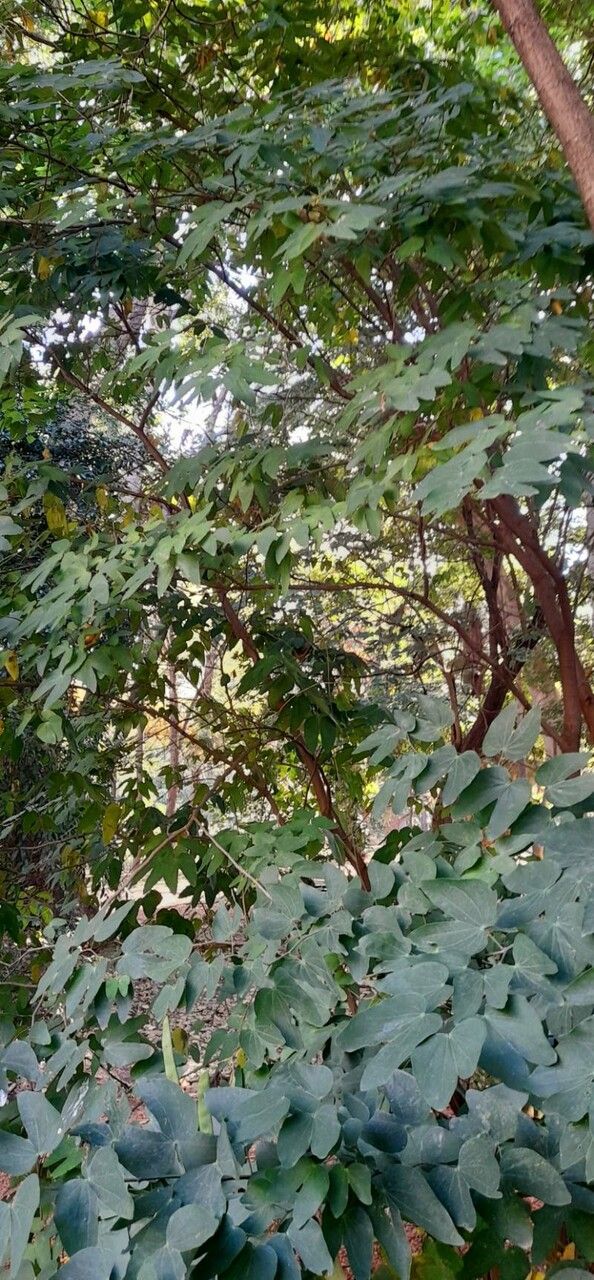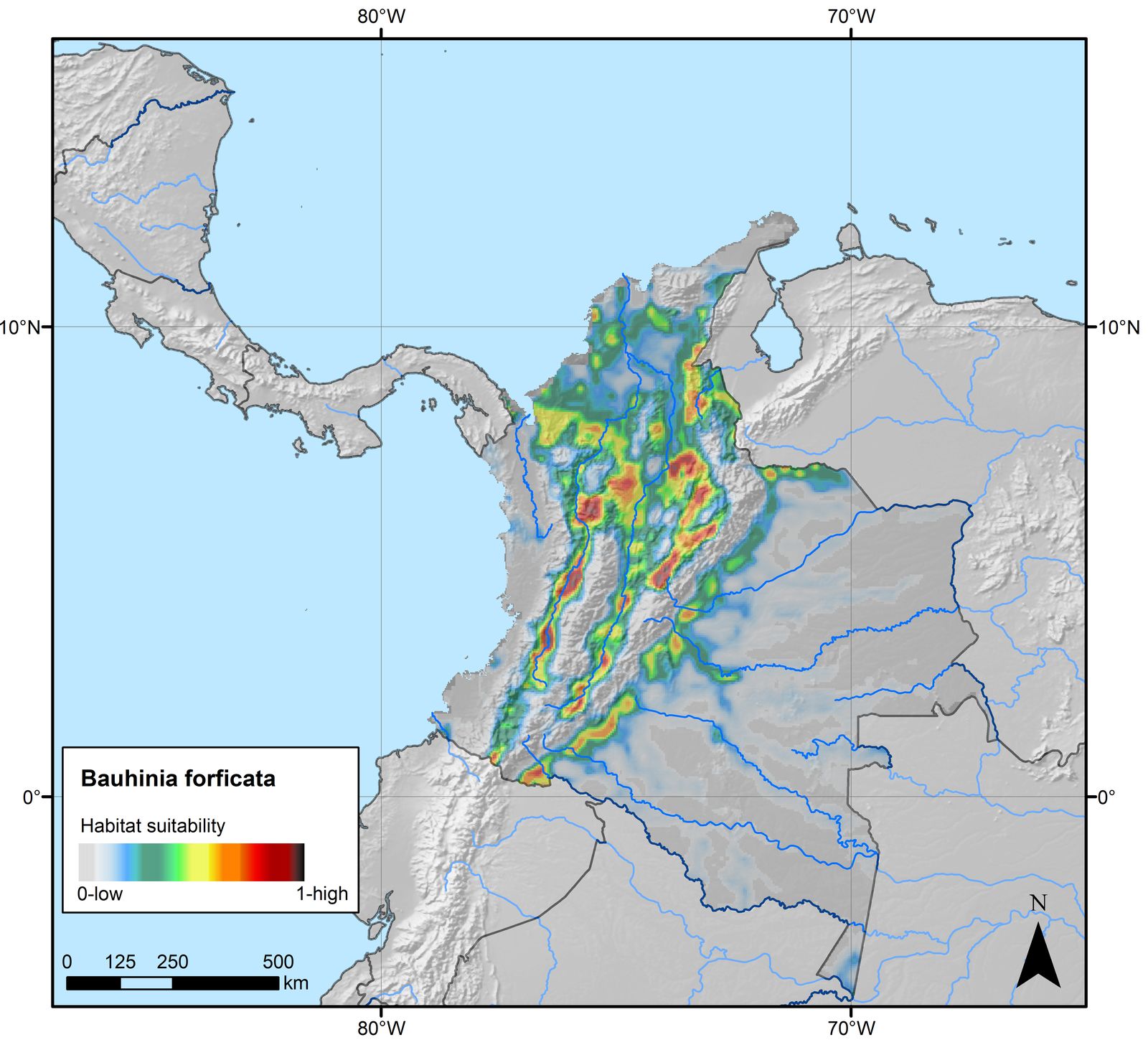Brazilian Orchid Tree
bauhinia forficata
Also known as: ["Princess Flower","Cow Orchid"]
Overview
A deciduous tree native to South America, known for its striking orchid-like flowers and medicinal properties.
Benefits & Perks
["long-flowering","wildlife attractant (bees, butterflies, birds)","aesthetic foliage"]
Botanical Classification
| Phylum: | Magnoliophyta |
| Class: | Magnoliopsida |
| Order: | Fabales |
| Family: | Fabaceae |
| Genus: | Bauhinia |
| Botanical Name: | Bauhinia forficata |
Plant Characteristics
Basic Information
- Category: Trees
- Suitable Location: outdoor garden in a sunny spot, or as a container plant in a large pot
- Suitable For:
- Is Weed: No
- Allergenicity: low
Environmental Needs
- Climate: {"temperatureRange":"5–35°C"}
- Hardiness: {"zones":"8–11"}
- Misting: rarely required, only if grown in very dry indoor conditions
- Drainage: Fast-draining to prevent root rot.
- Soil Type: Well-draining, loamy soil with organic matter; cactus or succulent mix can be used for containers.
Maintenance Level
- Maintenance Level: moderate
- Toughness Level: moderate
- Pruning Frequency: Annually, after flowering or in late winter/early spring.
- Pruning Intensity: Moderate; remove up to one-third of old growth if needed.
Care Details
Ideal Sunlight Coverage:
Full sun to partial shade; 6–8 hours of direct sunlight daily, with some afternoon shade in hot climates.
Sunlight Tolerance Tips:
Acclimate new plants gradually to direct sun; protect from harsh midday sun; adjust placement based on seasonal light intensity.
Care Requirements
Care Difficulty
moderatemoderate
Sunlight
full sun to partial shade
Rotate plant for even growth; use sheer curtains in intense sun; move outdoor plants to dappled shade in peak summer.
Watering
every 7–10 days during active growth, less frequently in winter
Water thoroughly but infrequently; ensure good drainage; adjust based on season and weather.
Soil
well-draining, loamy soil with moderate organic content
pH: Slightly acidic to neutral (pH 6.0–7.0).
Use raised beds for better drainage; avoid heavy clay soils; amend with organic matter.
Temperature
Prefers warm temperatures (65–85°F or 18–29°C); tolerates mild frosts but thrives in subtropical to tropical climates.
Protect from frost; avoid sudden temperature swings; ensure good air circulation in hot weather.
Fertilizing
every 4–6 weeks during spring and summer with balanced liquid fertilizer
Fertilize lightly; avoid over-fertilization; flush soil occasionally to prevent salt buildup.
Propagation
Methods
Stem cuttings or seed; stem cuttings are more reliable for home growers.
Step-by-Step Propagation Guide
- Take 4–6 inch cuttings.
- Remove lower leaves.
- Apply rooting hormone.
- Plant in medium.
- Keep moist and warm.
Best Time: Spring or early summer when the plant is actively growing.
Environment
Warm, humid environment with indirect light; maintain consistent moisture.
Medium
Well-draining mix of perlite and peat moss or cactus mix.
Hormone
Recommended to use rooting hormone for faster root development.
Timeline
Roots may develop in 4–8 weeks; establish in new pot after 3–6 months.
Tools Needed
Pruning shears, rooting hormone, small pots, well-draining medium.
Quick Tips
Use healthy, non-flowering stems; keep cuttings out of direct sun; maintain humidity with a plastic cover.
Pruning & Repotting
Pruning Guide
Method
Selective thinning and heading back to promote bushier growth.
Pruning Plan
Prune to maintain shape, encourage flowering, and remove dead or diseased wood.
Tools
Pruning shears, loppers, gloves, disinfectant.
Checklist
Disinfect tools; prune dead/diseased wood; shape plant; avoid excessive pruning.
Repotting Guide
Best Season
Spring, before new growth begins.
Pot Size
Move to a pot one size larger (2–3 inches wider in diameter).
Method
Remove plant gently; trim roots if necessary; use fresh, well-draining soil; ensure proper drainage.
Suggestions
Repot every 2–3 years or when roots fill the pot; beneficial for container-grown plants.
Checklist
Choose appropriate pot; prepare new soil; inspect roots; water after repotting.
Advanced Care Tips
Watering Mastery
Watering Checklist
Check soil moisture; water deeply; ensure drainage; adjust for season.
How to Apply Water Properly
Water at the base of the plant, ensuring moisture reaches the root zone; avoid wetting foliage; allow excess water to drain away.
Watering Schedule Tips
Water deeply once the top inch of soil is dry; reduce frequency in winter to prevent root rot.
Soil Improvement
Add perlite or sand for drainage; incorporate compost for fertility; ensure good aeration.
Temperature Stress Management
Signs of Temperature Issues
Leaf drop, yellowing, or stunted growth in cold; wilting or scorching in excessive heat.
Cold Stress
Slows growth, may cause leaf drop; prolonged cold can damage or kill the plant.
Solution: Provide frost protection; move potted plants indoors; use mulch to insulate roots.
Hot Stress
Leaves may wilt, scorch, or drop; growth may slow due to excessive transpiration.
Solution: Provide shade during peak heat; increase watering; use mulch to retain soil moisture.
Fertilizing Guide
Fertilizing Checklist
Use balanced fertilizer; apply during growing season; avoid winter feeding.
Fertilizing Method
Use balanced, slow-release fertilizer in spring and summer; dilute liquid fertilizer to half-strength monthly during growing season; avoid fertilizing in winter.
Common Problems & Solutions
Toxicity Warning
Cats
Slightly ToxicCats may suffer mild gastrointestinal issues if they ingest Bauhinia forficata. The plant is not highly toxic to cats, but ingestion can cause mild discomfort.
⚠️ Symptoms:
🌿 Toxic Parts:
⚡ Toxic If:
if eaten
Dogs
Slightly ToxicDogs may experience mild gastrointestinal upset if they consume parts of Bauhinia forficata. The plant is not highly toxic to dogs, but ingestion can lead to discomfort.
⚠️ Symptoms:
🌿 Toxic Parts:
⚡ Toxic If:
if eaten
Humans
Slightly ToxicBauhinia forficata contains compounds that can cause mild gastrointestinal distress and allergic reactions in some individuals. The plant's leaves, flowers, and seeds are the primary toxic parts, though the toxicity is generally low.
⚠️ Symptoms:
🌿 Toxic Parts:
⚡ Toxic If:
if eaten
Frequently Asked Questions
Q: Is Bauhinia forficata suitable for small gardens?
A: No, it is a large tree and requires ample space to grow.
Q: Does it require special care?
A: It is relatively low maintenance but benefits from occasional pruning to maintain shape.
Q: Are the flowers fragrant?
A: Yes, the flowers have a mild, sweet fragrance.
Quick Reference
| Family: | Fabaceae |
| Care: | moderate |
| Light: | full sun to partial shade |
| Water: | every 7–10 days during activ |
Get Expert Care Tips
Download the Plantious app for personalized care reminders and plant identification!
Google Play App Store








